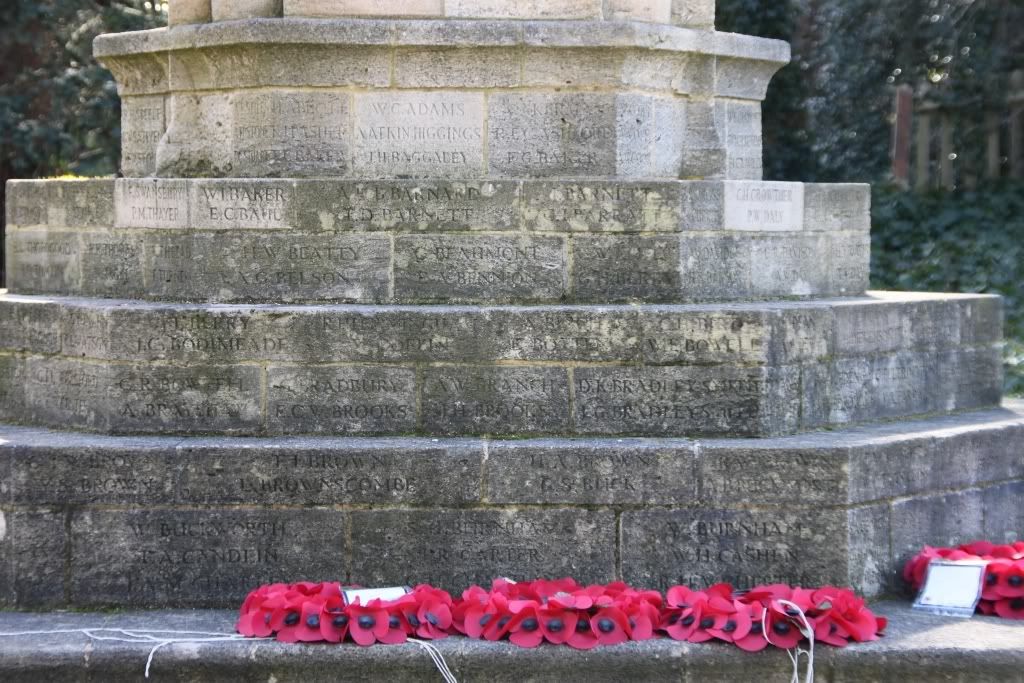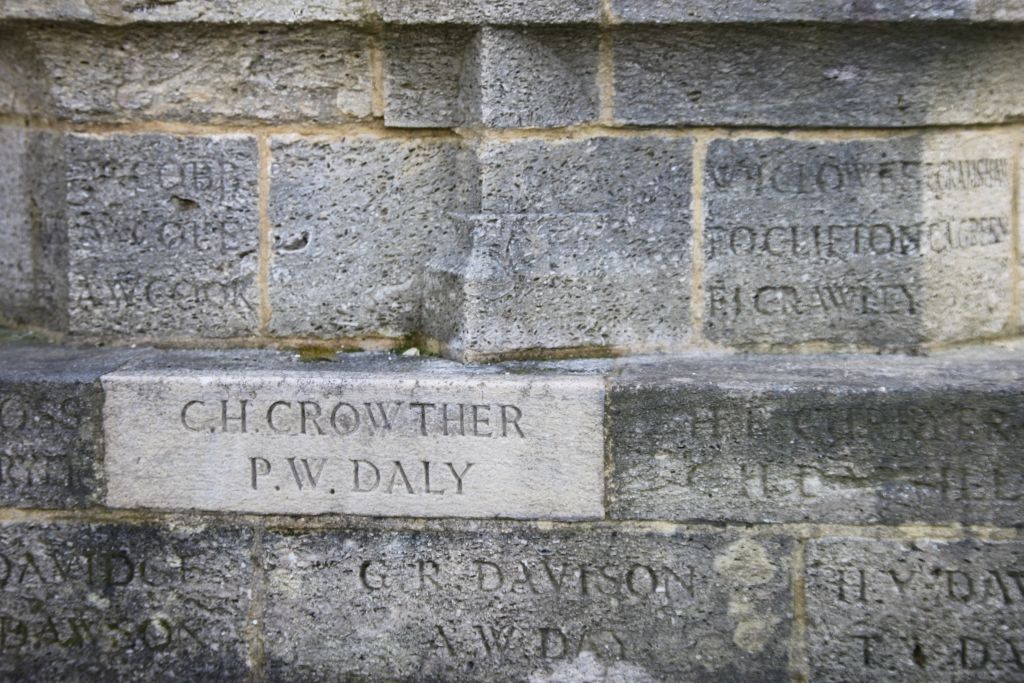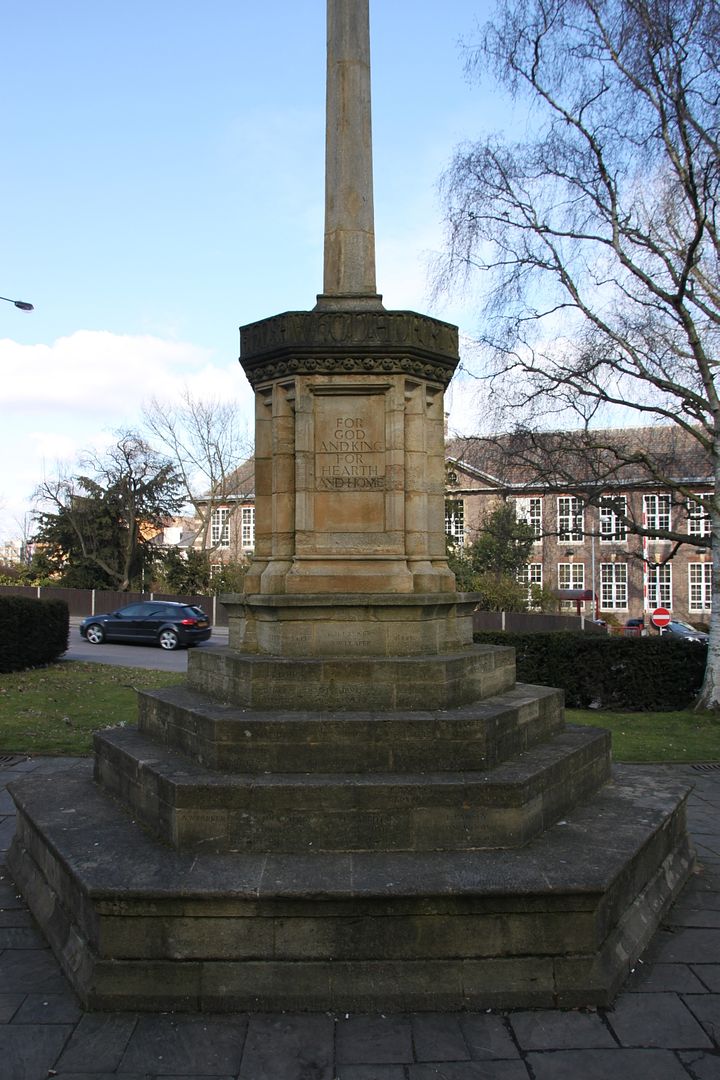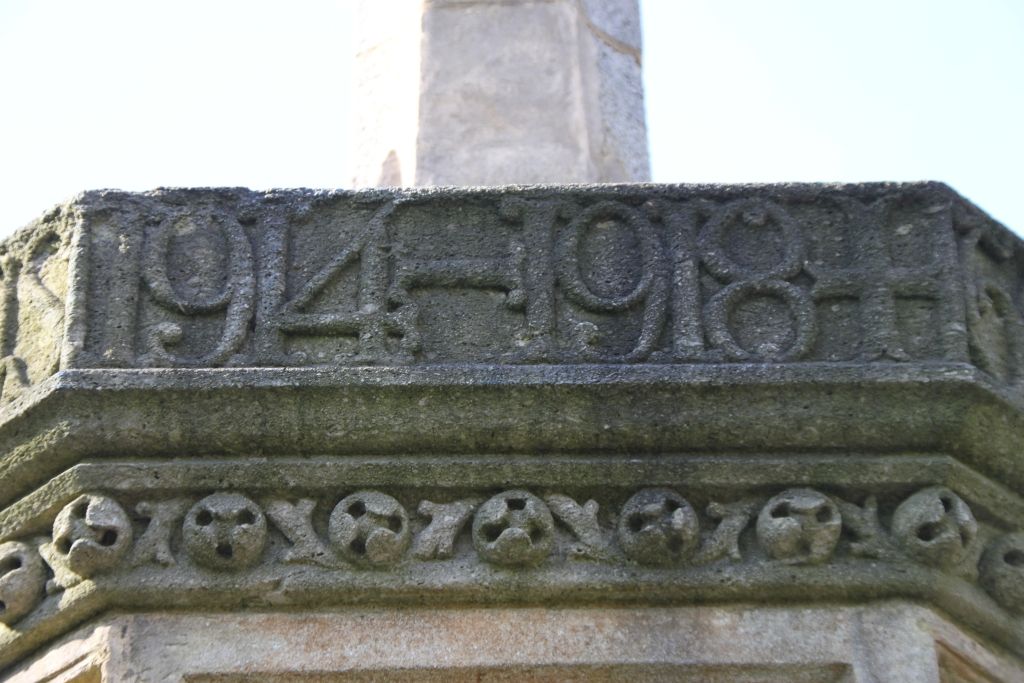It is not politics driven, that happens far away in the TV cameras, but even at these small memorials, people remember their ancestors, their neighbours, all who gave their all so that we could live. Here is the slide show where you can see the photos in higher resolution.

While walking down the hill at Harrow on the Hill, I made a detour to see the Harrow on the Hill war memorial. Unfortunately, I was not able to find much online information on this memorial, who were the dead, who made the actual memorial, what is the history behind it, etc.

This monument has been recently been refurbished, you can make out the difference in the stone colour between the central drum and the cap stone on top.

The base has a series of steps where the poppy wreaths are kept. Why the poppy? Well, the reason is because of John McCrae’s poem, In Flanders Fields.
In Flanders fields the poppies grow
Between the crosses, row on row,
That mark our place; and in the sky
The larks, still bravely singing, fly
Scarce heard amid the guns below.
We are the Dead. Short days ago
We lived, felt dawn, saw sunset glow,
Loved, and were loved, and now we lie
In Flanders fields.
Take up our quarrel with the foe:
To you from failing hands we throw
The torch; be yours to hold it high.
If ye break faith with us who die
We shall not sleep, though poppies grow
In Flanders fields.
So many people died during the first World War that the fields turned red with their blood. Then these red poppies grew across these fields and thus becoming an apt symbol of remembrance of these soldiers who gave their lives. Between the crosses, row on row,
That mark our place; and in the sky
The larks, still bravely singing, fly
Scarce heard amid the guns below.
We are the Dead. Short days ago
We lived, felt dawn, saw sunset glow,
Loved, and were loved, and now we lie
In Flanders fields.
Take up our quarrel with the foe:
To you from failing hands we throw
The torch; be yours to hold it high.
If ye break faith with us who die
We shall not sleep, though poppies grow
In Flanders fields.


Two of the wreaths, one from the Royal Naval Association and one from the Mayor and other councillors on the right. I was reminded of the wonderful poem by Makhanlal Chaturvedi, Pushp ki abhilasha (the dream of the flower) where the flower does not want to form the offerings to lovers but wants to be laid down on the path which is used by the brave martyrs who are going to give up their lives for their motherland.

The stone tiles contain the names of the Harrow inhabitants who died during the great war. Some of them have been restored, while some of them have been worn away by the elements.

View from the south side. The central tablet says, Their Name Liveth for ever more. And hopefully it will.

View from the West side. The inscription says, “For God and King, For Hearth and Home”.

The names are almost disappearing from the flagstones, which is why it is being restored.

The next tablet says, “As Gold in the Fvrnace He proved them”.

The letters 1914-1918 carved on the top, the years during which World War I was on.

The final view from the North side, the crossed contrails over the skies made a rather interesting backdrop to this stone memorial to those long dead soldiers whose bones are lying somewhere in Belgium or France under those battlefields where hundreds of thousands died.

No comments:
Post a Comment